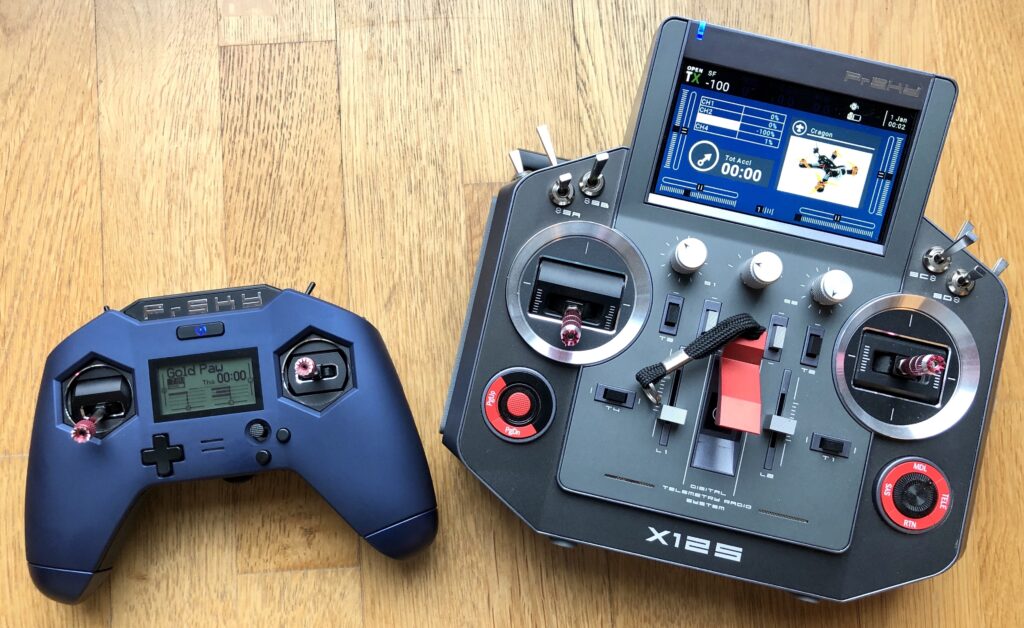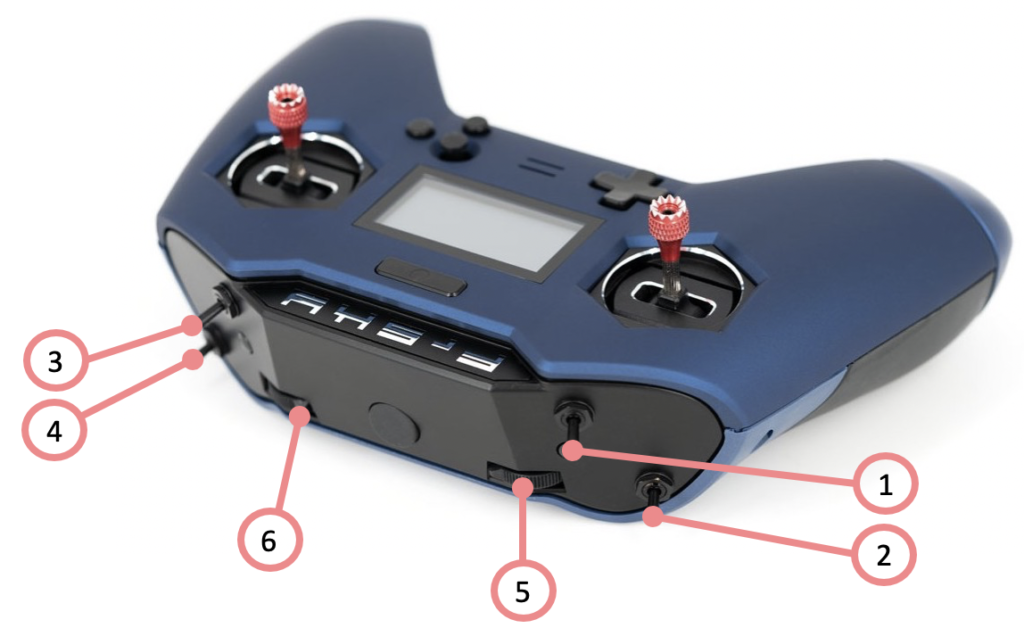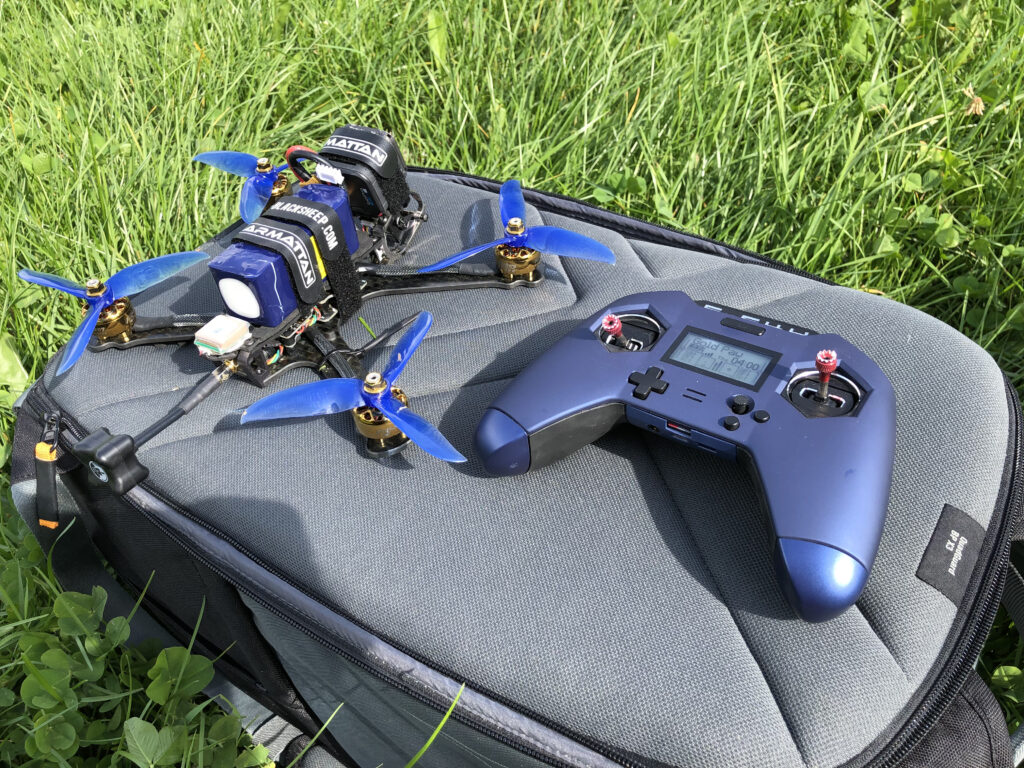
I switched from using a FrSky Horus X12S to a FrSky X-Lite Pro. Here’s my experience …

My rational for switching was size, and for this, I’ve never looked back. My flying experiences take me to places that require a hike with a rucksack of drone gear, and then flying 5 or so batteries. The weight and dimensions of the X-Lite (390g) vs the X12S (1320g) was a major consideration in my X-Lite Pro purchase. With the X-Lite Pro, I found that it’s possible to take a cut down selection of gear in a hiking backpack rather than a not-so-ergonomic drone backpack. Sandwiches, the X-Lite Pro, FatSharks, several batteries and a few spares go inside the hiking backpack, and the drone and water bottle on the outside. This allows a hike to include flying a drone, as opposed to being the sole reason of the day.

Setting it up
My experience was not immediately smooth. I bought the X-Lite Pro, but it comes without batteries. Eh?! So, another order & wait for a pair of hard-to-come-by 18500 Li-ion batteries. However, the X-Lite Pro fairs better than the standard X-Lite – it’s now possible to re-charge the battery via the USB port, which was previously not possible without a mod.
Next up – stick configuration! On the X-Lite Pro the stick layout (mode 1 vs 2) is DIY – you have to adjust various screws to change the stick mode and stiffness. For 10 minutes, you’re wondering if you’ll ever be able to control a drone, but one eventually gets the right tension.
The FrSky protocols were a multi-day Googling battle for me, having previously used the available Horus X12S D8/D16 protocol linked to a R-XSR receiver. The X-Lite Pro does not support this, but a new beta OS version supports the ACCESS ACCST D16 protocol. Thus down the rabbit hole of an X-Lite Pro beta OS upgrade, and then a re-flash of all R-XSR receivers with the proprietary ACCST D16 protocol (via interface on controller). I lost one R-XSR receiver along the way by stupidly over-pressing the tiny re-flash button on the R-XSR and breaking it off.
Finally … control setup, Betaflight configuration and switch configuration. This I did again from scratch, referring to my previous X12S configuration. I found that the number of switches are far more restrictive than the Horus X12S. There are *just* enough for the core functions. I ended up using the available switches as follows:

- Toggle arm/disarm
- Toggle flight mode (acro/angle/horizon)
- Normal / turtle mode / ?
- Toggle combined beeper + failsafe
- Potentiometer to adjust throttle power (see Variable throttle power with OpenTX and X-Lite Pro)
- Potentiometer to adjust volume of sound alerts
Flying
The X-Lite does take getting used to, primarily as the unit and controls are smaller than the X12S. The X-Lite levitates towards thumbing, rather than pinching (see thumbing vs pinching).

Summary
Positives
- Lighter and less bulky, by almost 1kg
- The battery easily outlasts my flying – 6-8 4S batteries, no problems
- No impact to my range of transmission
- OpenTX functionality is the same on the X12S and X-Lite Pro
- Not as obtrusive in use as the X12S
- Less than half the price of the X12S (200 vs 500 USD)
Negatives
- Bare minimum switches – a couple more would be helpful
- Switches not as easy to operate as on the X12S – quality not so great and a bit too small. No satisfying click.
- Original D16 protocol not supported; proprietary ACCESS ACCST upgrade is required
- Controller size does take a few batteries to get used to
- By default, no lanyard mount (until you 3D print a lanyard mount)
- If you’re into pinching when controlling, it’s difficult without the stable base of a larger controller
- LCD panel is a step-down from the colour and higher resolution of the X12S
| X-Lite Pro | Horus X12S | |
| Weight | 390 grams | 1320 grams |
| Dimensions | 220 x 185 x 100 mm | 220 x 235 x 75 mm |
| Price | 200 USD (excl. batteries) | 500 USD |
| Protocols | ACCESS, ACCST D16 | D16, D8, LR12 |
| Switches | 4 toggle switches, 2 variable | 8 toggle switches, 5 variable |
| LCD | 128 x 64 pixels | 480 x 272 pixels |
| Channels | 24 | 32 |
Like!! Great article post.Really thank you! Really Cool.